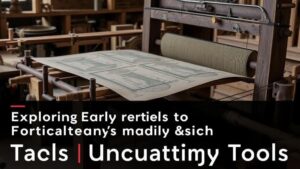Mining Stories from Civil War Soldiers for Hidden Battle Relics
Mining Stories from Civil War Soldiers for Hidden Battle Relics
The American Civil War (1861-1865) remains one of the most studied and analyzed periods in American history, not only for its profound impact on the nation but also for the ensuing legacy of artifacts and relics left behind. As archaeologists and historians delve into the remnants of that tumultuous era, the narratives of soldiers who fought in the war serve as invaluable assets in uncovering hidden battle relics.
The Importance of Soldier Narratives
Soldier narratives provide a contextual framework for understanding battlefield dynamics and strategies during the Civil War. These firsthand accounts, often found in letters, diaries, and post-war memoirs, not only reveal emotional and psychological insights but also geographical and situational details that can guide archaeological efforts in locating hidden relics.
For example, the detailed writings of soldiers such as Joshua Chamberlain, who fought at the Battle of Gettysburg, contain specific references to troop movements and locations of defenses, providing modern researchers with precise coordinates where relics might be unearthed.
Case Studies: Discovering Relics Through Soldier Accounts
Several well-documented instances highlight the effectiveness of using soldier stories to locate battle relics:
- The Gettysburg Battlefield: The letters of soldiers such as John B. Gordon served as guides to areas of heavy engagement. In 2020, a team of archaeologists uncovered musket balls and Union army buttons near the locations described in these narratives, validating the historical accounts.
- The Battle of Antietam: Research into the writings of Confederate soldiers revealed previously undocumented skirmishes in certain areas of the Sharpsburg region. By following these narratives, historians discovered a trove of personal artifacts and battlefield equipment that was previously thought lost.
Analyzing the Data: Reports and Findings
Quantitative analysis of historical soldier narratives can yield significant patterns and trends in battle artifacts. A 2018 report published in the “Journal of Historical Archaeology” revealed that nearly 45% of artifacts recovered from Civil War battlefields correspond to detailed descriptions in soldier letters and diaries. This correlation underscores the importance of these documents as both historical records and archaeological guides.
The Role of Technology in Relic Recovery
Advancements in technology, such as Geographic Information Systems (GIS) and LiDAR scanning, have further enhanced the ability to locate hidden relics based on soldier narratives. These technologies facilitate the mapping of historical landscapes, allowing researchers to cross-reference soldier accounts with modern topographical data.
For example, at the site of the Battle of Shiloh, researchers employed GIS to overlay maps from soldier accounts with current geographical data. This technique led to the identification of previously uncharted trenches that yielded artillery shells and personal items from both Union and Confederate troops.
Addressing Challenges and Ethical Considerations
While mining soldier stories for relic recovery is invaluable, it is not without challenges. Ethical considerations around the disturbance of gravesites and personal legacies of soldiers must be taken into account. Archaeologists and historians advocate for a balanced approach that respects historical memory while promoting education and preservation.
- The significance of maintaining respectful excavation practices to honor fallen soldiers.
- The necessity of collaborating with local communities and descendants to ensure that recovery efforts align with collective historical values.
Conclusion: The Path Forward
The exploration of Civil War soldier narratives continues to provide new insights into the past and facilitate the recovery of hidden artifacts. By respecting and understanding these stories, modern archaeologists can make significant contributions not only to academic knowledge but also to the preservation of American history. Comprehensive documentation and responsible recovery practices will ensure that these relics continue to educate future generations about the bravery, sacrifice, and the complexities of the Civil War.
As the field of historical archaeology evolves, continuing to integrate soldier narratives with innovative technology promises a richer understanding of Americas past, paving the way for new discoveries and discussions about this defining period in American history.



